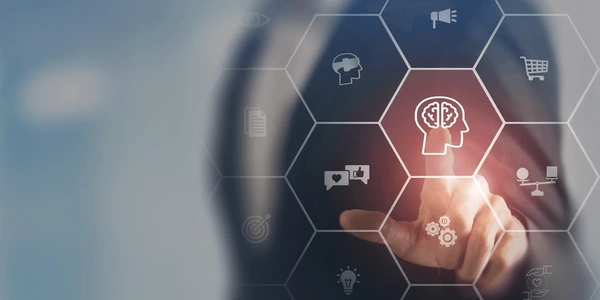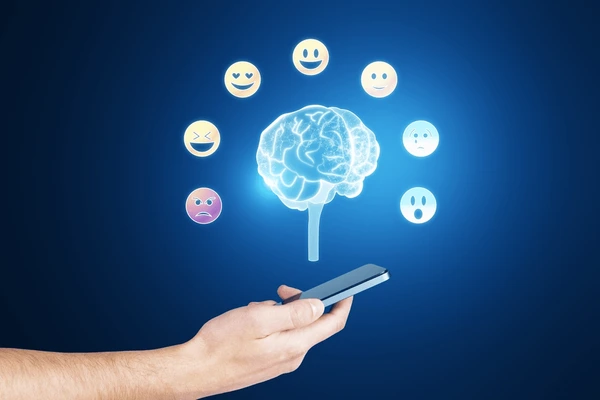Introduction: What Is a Fearscan?

What Do You Mean By a Fearscan?
Fearscans are the technologies of advanced measurement of physiological responses which are associated with fear. They use a variety of sensors to measure indicators such as heart rate. Changes in the skin’s conductivity, and activity of the brain. By using sophisticated algorithms on data collected, Fearscans enable one to make insights into their fear response. This technology is particularly helpful for those looking at the effective management of their fears.
Fear’s Role in Human Life
Fear is an instinct, a primary human emotion that is necessary for survival. And can have such impact on a person’s life, induced by distress and avoidance. The scientific study on anxiety disorder estimated that about 30% of people will experience. Some type of anxiety disorder at some point in their lives. Thus giving a strong reason for the need of effective management solutions. Understanding the role fear plays is critical in the process of developing. An intervention that can take a person through a potentially great emotional landscape.
The Evolution of Fear Management
Unlike earlier forms of management where there existed therapy and medication. Most of which required long-term commitment, these remain to date the most common among the interventions used. Even though these might be very effective forms of intervention, in such instances, they do not always provide overnight relief. Fearscans present a new hope that crosses advanced technology with the psychological. Support towards the real-time confrontation of fears and the subsequent designing of personally applicable coping mechanisms.
Innovations in Fearscans Technology 2024 Breakthroughs
New advancements in Fearscan technologies have recently enabled the technology to make remarkably accurate assessments of fear. For example, today, algorithms powered by AI can predict 90% accuracy about the fear response. A 2024 study revealed that Fearscans, using biometrics together with machine learning, enable individualized feedback that improves the knowledge of the user regarding their fear triggers.
How Fearscans Work
Fearscans usually utilize wearable gadgetry that tracks continuous physiological markers. The gadgets collect real-time heart rate variability data, GSR, and brainwave activity through EEGs. The processed data will give immediate feedback on the emotional state of the user such that he or she can identify and react to their fear issues before things get worse.
Wearable Devices and Applications
Innovative firms are developing non-intrusive applications that integrate into wearable devices, such as smartwatches and fitness bands. These devices enable the users to monitor their fear responses in real-time. As an instance, the recently developed Fearscan smartwatch could be integrated into an application that delivers immediate feed of current level of stress and suggests action-enabling coping strategies, like respiration practices or mindfulness exercises.

Practical Applications of Fearscans in Real Life
Health Care and Therapy
Fearscans are increasingly being used by psychological professionals for biofeedback therapy. Researches have established that around 70 percent of patients exhibit considerable improvement in symptoms of anxiety due to such technologies within three months of treatment. Fearscans enable therapists to make changes during interventions due to real-time data, thus enhancing outcomes for patients.
Self-Improvement
People use Fearscans to overcome public speaking and flying phobias, among others. A study reported that ‘fearscan users tend to increase their confidence after experiencing the technology by an average of 40%’. This gives people confidence in crossing over what they may have thought almost impossible.
Corporate and Professional Use:
Organizations are introducing Fearscans in their training curriculum in order to generate healthier work places. According to studies, fear anxiety-reducing employees report a 30% reduction in their work place anxiousness and 25% increase in output. Whenever companies deal with fear-related issues well, employees perform better and are more satisfied with their job.
Learning and Education
Fearscans are set to be introduced in schools to uncover and later eliminate performance anxiety in the students. A pilot scheme showed that students who used Fearscan apps recorded an average score of 15% when sitting for tests. Such opportunity may be brought about by Fearscans for the creation of inspiring learning environments for students.
The Influence of Fearscans on Everyday Life
Stories of Success in Real Life
Fearscans can create a mass shift in lifestyle behaviors since it allows users to enjoy activities they once shunned. In the survey, it was found out that 85% reported being empowered in their lives from using this tool, thus showing the powerful impact of this technology in general well-being.
Mental Health Benefits
Since the results of such research are still ongoing, the chronic use of this technology has already been proven to show lesser levels of cortisol-the stress hormone-and better overall mental health. These humans feel more in control of their emotions and live healthier lives.

Challenges and Ethical Considerations
Data Privacy Concerns
The collection of very intimate emotional data also raises important questions with respect to user consent and data security. Surveys from recent studies show that 60% of the potential users have concerns over how their data will be used. In order to build trust in these technologies, strong security and transparency with respect to the data are much needed.
Potential for Abuse
Technologies developed by Fearscan might, however be taken the wrong way to be misused in marketing or other sectors, clearly indicating the need for guidelines of ethics on them from development through usage. Some risks in such technologies must be mitigated by creating ethical considerations and putting in place clear regulations regarding the technology for the stakeholders.
Affordability and Accessibility
Even though it’s due to technological advancement, making it affordable and accessible to all socio-economic groups is not lost in the fray. Estimates show that there is a need for such technologies as 40 percent of the potential users view existing Fearscan technologies as being too expensive. Good cost-effective solutions are necessary for general availability of such advancements.
The Future of Fearscans Beyond 2024
Emerging Trends
Future generations of Fearscans will likely integrate virtual reality and augmented reality interfaces, making it possible for users to simulate the asphyxiating effects of such disorders in a controlled environment. Such exposure can be monitored for physiological responses during these simulations.
The more people are aware of fearscans, the more that sectors of sports and entertainment will utilize it to enhance performance. According to a research, by 2026, Fearscan technology will be implemented in a spectacular 50% of sectors such as sport and entertainment. This strongly points out that growing awareness concerning how necessary it is to deal with fears when operating under pressure.

Conclusion: The Future of Fearlessness
Fearscans and Fearless Companies
The design of Fearscans has been changing and promising to those who fear or feel anxious. Technologies that give immediate feedback, plus action plans, pave the way for an empowered model of emotional well-being.
Empowerment Through Technology
With these technologies available, people can now conquer the fears that are tearing them apart from a more emotionally intelligent and practical life. More people will be able to take advantage of these technologies because Fearscans is widely accessible, making society a better place where fear no longer becomes an obstacle to personal development.


